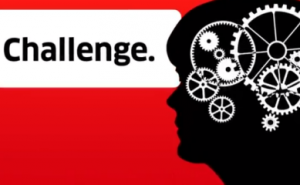The Challenger Sale: Mindset or Method?
 We recently published an article in the Harvard Business Review about our years of research on Challenger selling. The research looks at the recent and rapid evolution of the traditional sales model and what corporate sales teams must do to win in this new environment.
We recently published an article in the Harvard Business Review about our years of research on Challenger selling. The research looks at the recent and rapid evolution of the traditional sales model and what corporate sales teams must do to win in this new environment.
As with so much of this research (including the successful book), the thinking behind it and the recommendations that stem from it provoke many comments. One recent question addressed the implementation of the Challenger sales model and asked if Challenger selling is more of a philosophy than a process or methodology. The key point is that Challenger is actually both.
Organizations absolutely need a sales process and methodology — a philosophy alone isn’t enough. In the HBR article, we take issue with the nature of current process/methodology and how they’re used to govern rep selling efforts, not whether process and methodology have a role to play in today’s sales organization. They absolutely do.
Challenger as Philosophy and Process
First, CEB members know that Challenger has evolved well beyond what’s in the book (which is definitely written more at the level of “philosophy” by focusing on the changes in customer buying behavior we’ve observed and the best selling and marketing approaches in light of those changes). Since the book, we’ve studied much more of the “applied Challenger selling” approach.
We’ve studied the sales process Challengers follow (turns out, it’s not a sales process but a customer-verified buying process). We’ve studied how they select opportunities in their territories (they look for emerging, rather than established, demand). We’ve studied how they identify and prioritize stakeholders within the customer organization (they look for “mobilizers,” not advocates or coaches that don’t actually exist). And we’ve looked at how they manage those stakeholder interactions (they coach the customer on how to buy rather than asking the customer to coach them on how to sell).
Putting all of this together, we can say with confidence that what began as a philosophy has now been codified as a real process and methodology (CEB members can access all of the related process documents, tools, templates, etc., here). It took us four years of in-depth research to come up with this, but we think it was worth the wait. The last thing we were going to do was posit a methodology based on our opinions about what works (there’s plenty of that in the market already!). We wanted to propose a methodology grounded in research—research into how customers are buying differently and research into what best sellers do in light of those changes.
This being said, process and methodology without a guiding philosophy (or belief set) is DOA—at least when it comes to Challenger and Insight Selling.
What Leads Sales Reps to Adopt Challenger?
In our work, we studied precisely what drives rep adoption of new sales behaviors such as Challenger/Insight Selling. It turns out that the number one driver is possessing an intrinsic motivation to challenge customer thinking and deliver insight as part of the sale. In other words, getting these new selling behaviors to take root requires that reps believe deeply that what they’re doing is right for the customer. By contrast, we also examined many “traditional” sales climates – typified by process compliance – and found absolutely no statistical evidence that having belief or conviction in the target selling behaviors was required. The research is pretty clear on this point: If you want to drive compliance to a process or methodology, the old-fashioned carrot and stick approach (extrinsic rewards) are good enough. But, if what you’re trying to do is drive the adoption of Insight Selling behaviors, you need more than that. You need a powerful belief set, or philosophy, that generates intrinsic motivation.
In many ways, this speaks to what is so broken in the majority of sales organizations. Sales leaders pick a process or methodology but never invest in getting buy-in and conviction from the sales organization. Or, perhaps they try, but sellers reject the attempt on the grounds that the method they’re being asked to follow is out-of-date, isn’t based on real research, and doesn’t accurately reflect the current realities of the customer buying environment.
Either way, we’ve all seen the movie that follows: a new methodology is unveiled…but reps don’t really believe in it and aren’t engaged in the journey… so, adoption doesn’t happen… which then leads senior leadership to tighten the compliance screws even more… which then leads to reps merely going through the motions to avoid punishment. It’s a death spiral for the sales organization.
Brent Adamson's Blog
- Brent Adamson's profile
- 9 followers



